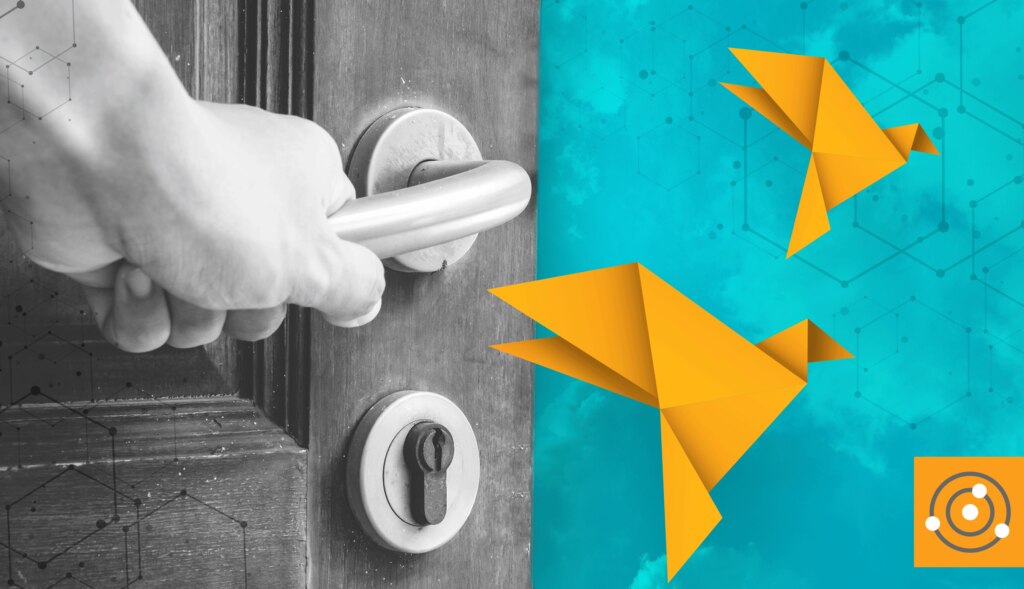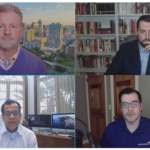Year of Yes in Tech
March 5, 2021 |
Networks

Recently, I finished reading Shonda Rhimes’ “Year of Yes: How to Dance It Out, Stand in the Sun and Be Your Own Person.” I found it inspiring in several ways and it instantly had me wanting to apply some of these principles to working in tech. Look, you all know by now that I love to talk about non-technical skills, aka “soft” skills, and a lot of the ideas represented in this book apply to those same non-technical skills. So, I decided to take a few of these and relate them to how I see them within our sphere. I won’t get into her stories here, specifically, but I do recommend the book. It’s fun, funny, and written to feel like you’re chatting over lunch with her about this growing experience in her life and career.
Let’s start with the overarching concept: “Say yes to everything for a year.”
Just like the movie, “Yes, Man” starring Jim Carrey, Shonda Rhimes at first seemingly takes it quite literally. Now, I would never suggest you should say yes to everything within your role. Ask anyone who knows me, and they’ll tell you how much I love to say no. I think the most important lesson to learn from this, and I think it’s illustrated well through the course of the book, is really don’t just say no. Don’t say no just because you’re afraid, uncertain, or even lacking in confidence.
Story time:
In the almost year that I have been operating at SolarWinds as a Head Geek, I have done many things I would have said no to (and some that I did previously say no to) out of fear or lack of confidence. Honestly, being required to do some of the things that scared me was a reason I wanted this job. It helped me tell myself I didn’t have a choice (of course, I did and do) and I HAD to do things. As an example, I have real stage fright—you might think that has no place in our pandemic world, and you would be wrong—and get real anxiety leading up to speaking events. I knew it was part of this job. I chose to say yes and to challenge myself.
I am so glad I did. I had gotten comfortable saying no to anything and anyone, sometimes without even really considering what benefits there would be for me to say yes—or negotiate to a yes. Consequently, I wasn’t being challenged enough and I was bored and unhappy with the role I had. For me, in February 2020 I realized it was past time for me to make some changes, and I hope one thing I learned from this is to try new things—I might be surprised by how much I end up enjoying those things in the end or by how well they will go. So, don’t say no for the sake of saying no or out of fear.
This leads well into the next point (and my personal favorite), say yes to saying no.
I think this is essential to understand, especially since the pandemic started. This entire point for me with regards to our careers in IT is to prevent burnout. In the same way you shouldn’t say no just for the sake of saying no (or out of fear), you also shouldn’t say yes for those non-reasons. For many of us, when our manager/supervisor/CEO/whomever asks us to do something we usually say yes without considering the additional burden or out of fear of reprisals for saying no. Fellow Head Geek Sascha Giese has given some great talks on this topic like this one from THWACKcamp 2020. Learning to say no to your boss is an essential skill. In my previous role as a team lead, I tried to empower my engineers with the ability to say no to me, to my boss, to their fellow engineers, and to customers when needed.
In my mind, there are a couple of key factors required for saying no without reprisal. You simply can’t say no just because you don’t feel like it or because you’re afraid of messing something up. So, when presented with a new ask, consider your current workload, your experience or expertise with the task, others who may be more suitable for the task or looking for a new challenge, etc. Honesty and tact are important. Give yourself permission to not be overloaded.
Yes to speaking the whole truth.
This point speaks to me on many levels. I frequently say I’m a terrible liar, so I always insist on honesty. I have been called brutally honest on more than one occasion. I do understand some occasions call for tact though, and some even call for not the whole truth (see point above about tact). Situations that call for not the whole truth for me usually involve my son asking questions to which I’m not prepared to give him the answer, so instead I say “I’m not ready to explain that to you” or “You are not ready for this truth” and leave it at that. So, I will grant that it’s not always a good idea to tell the whole truth. However, as Shonda learns in her book, sometimes the occasion calls for it.
So, how does this apply to IT?
If you’re in a position to teach someone new to the role, mentor someone, or even cross-train your colleagues, you owe it to yourself—and them—to speak the whole truth. Nothing changes while everyone pretends it’s ok. This applies to many things from a lack of diversity in your company to broken processes and everything in between. If you look at your engineering staff and don’t see ranges in age, gender, ethnicity, background, etc., then you aren’t getting diverse voices. If your process for something is so involved and unnecessarily difficult, then perhaps you should reevaluate it. Change is good, but change isn’t easy. It starts with open acknowledgement of the whole truth.
“Thank you.” Smile. Shut up.
Imposter syndrome seems to run rampant in IT—I deal with it too—and this tenet from the book speaks to me and this imposter syndrome. When you get commended on a job well done, do you find it necessary to respond with reasons why they shouldn’t be doing that or redirect the compliment to someone else whom you think is more deserving? Many people in tech, myself included at times, can’t take a compliment. So, this one is simple: accept the work you’ve done and accept those compliments with a simple thank you and move on. It’s not so easy, but with practice it gets easier. Tech is constantly changing and evolving, which is generally something people love about working in tech, but it leaves room for doubt and knowledge and experience gaps. So, when you learn something new to solve a problem or complete a project, take those congratulations and praise with a simple thank you and move forward.
Yes to people. You are not alone.
This concept isn’t about people in general—it’s about YOUR people. Find your supporters, your cheerleaders, your cohorts, whomever makes you feel good about what you do. Even if they don’t work in tech, or even if you’ve never met in person, or whatever the scenario is: those people who lift you up, inspire you, commiserate with you, and bring positivity to your work and your life make all the difference in the world. My mom is one of my people. She has no idea what I’m talking about at least half the time, but she listens, and she lets me vent and she helps me get to the part where I understand what I need in that moment. I have several people in IT—at SolarWinds and elsewhere—who inspire me and lift me up when I need it (and sometimes when I don’t) and support whatever is going to make me happy. I hope you all can look around and find your people. The ones who aren’t going to talk you out of applying for that job or promotion but will tell you how amazing you are and you should go for it. When you don’t get it, they tell you to keep looking for other options because you deserve to be somewhere you’re happy and appreciated. When you struggle with imposter syndrome, they remind you of the things you’ve accomplished and what makes you great.
You may have noticed these things translate to essential (not soft) skills we need in tech and you can use to progress your career. I love to talk/write about these skills. This book inspired me, and if you choose to read it, I hope it inspires you. If not, I hope this post at least gave you something to think about. So, take a chance on something, and say yes.







